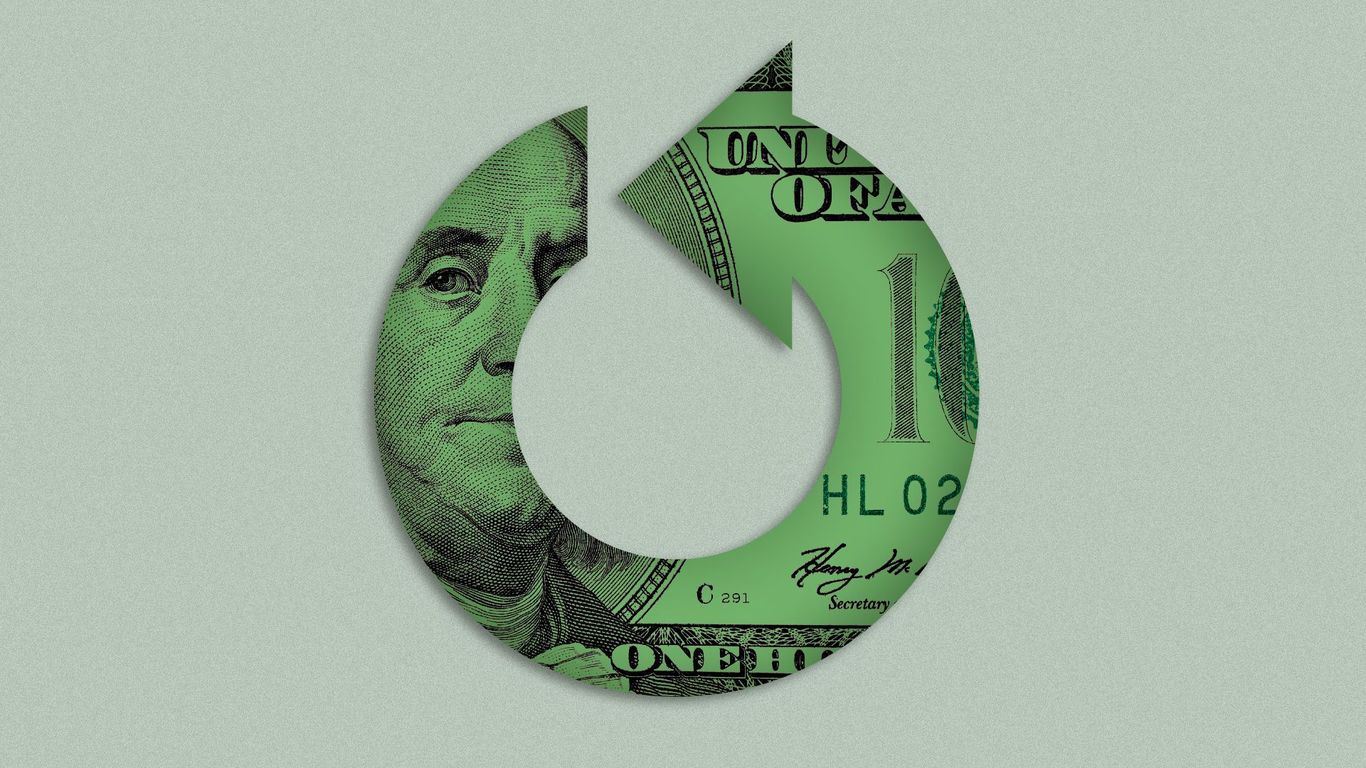- Arvind's Newsletter
- Posts
- Arvind's Newsletter
Arvind's Newsletter
Issue No. #1114
1.DigiYatra: A shining example of India's innovative DPI model in air travel: Jayant Sinha, former Civil Aviation minister in Business Standard
In an era defined by digital identity, seamless mobility, and citizen-centric service delivery, DigiYatra has emerged as one of India’s most significant innovations in Digital Public Infrastructure (DPI). It is not merely a contactless boarding system — it is the world’s first national digital traveller identity platform, designed to offer secure, consent-based, biometric verification at airports. DigiYatra reflects India’s unique ability to architect transformative systems by combining regulatory clarity, institutional design, and public-private execution.
2.India Signals Tougher US Trade Stance as China’s Tactic Pays Off: Bloomberg
Indian officials said trade talks with the US remain on track, although there are signs that New Delhi is adopting a tougher approach in negotiations, following China’s defiance of US President Donald Trump.
Trade talks between India and the US are progressing smoothly, with the first tranche of a deal expected by fall, according to people familiar with the discussions. However, it’s unclear if India can secure an interim deal by early July, when Trump’s reciprocal tariffs are expected to kick in, the people said, asking not to be identified because the matter isn’t public.
On Monday, India threatened to impose retaliatory tariffs on the US in response to Trump’s higher duties on steel and aluminum. New Delhi’s move was likely a negotiating tactic as it prepares to send a high-level delegation led by India’s trade minister to the US for trade talks from Saturday.
3.New ₹3,700-crore HCL-Foxconn JV to help India localise display manufacturing: Mint
India's display manufacturing industry received a boost on Wednesday when the Union cabinet approved the India Semiconductor Mission's (ISM) fourth chip-testing facility and the fifth semiconductor project overall.
The ₹3,700-crore ($433 million) project, first floated in January 2024, is an outsourced semiconductor assembly and testing (Osat) facility being developed by IT services firm HCL Technologies Ltd in partnership with Taiwanese contract manufacturer Hon Hai Precision Industry Co. Ltd, better known as Foxconn.
However, the HCL-Foxconn joint venture is the first “advanced manufacturing Osat" in the country, catering specifically to displays, making it the first chip-testing project of its kind. It will help the country localise the manufacturing of displays used in mobile phones and laptops, a senior official with direct knowledge of the matter told Mint on the condition of anonymity.
The facility, likely to become operational by 2027, will target a monthly output of 36 million chips, made from processing 20,000 semiconductor wafers per month.
4.India identifies land for mega shipbuilding & repair centres—HD Hyundai & Cochin Shipyard Ltd in talks for ₹10,000 Cr project: Times of India
HD Hyundai is partnering with Cochin Shipyard Limited (CSL) to build large vessels, potentially investing ₹10,000 crore in Thoothukudi, Tamil Nadu.
"CSL and HD Hyundai are zeroing in on the location of this shipbuilding facility," a senior official told ET while adding that Thoothukudi in Tamil Nadu is expected to be finalised for this mega infrastructure project with an expected investment of around ₹10,000 crore by completion.
5.Trump's China trade deal resets the board: Axios
The U.S.-China pause follows somewhat of a retreat on tariffs with the U.K., on which a 10% across-the-board baseline rate remains.
The White House also eased tariff pain for the auto industry, with Commerce Secretary Howard Lutnick acknowledging that companies needed time to adjust.
After weeks in which CEOs and logistics experts have been pulling their hair out, warning of dire consequences from the trade war, the administration is striking a series of face-saving deals.
Zoom out: It's becoming clearer what the new normal for trade policy looks like: across-the-board tariffs of at least 10% on countries with basically balanced trade and friendly relations (like the U.K.), or more like 30% for countries with which the U.S. has huge trade deficits and/or frosty relationships (like China).
What they're saying: "The administration's willingness to drive a harder line against China and other trading partners has now substantially waned," Skanda Amarnath, an economist at Employ America, wrote in a note.
"It is now more likely that the more diminished costs of tariffs are reflected through higher prices and not through outright declines in output and employment," added Amarnath, who marked down his odds on a recession in light of the deal.
The new normal has negative implications for Indian exporters.
For weeks, Indian exporters had been buzzing with hope, expecting a windfall of US orders that would otherwise have gone to China, especially in sectors like textiles and hand tools. But with the tariff war cooling down, that opportunity seems to be slipping away.
"Initially, the tariffs were so high that there was barely room for worthwhile trade. The US market was practically shut for China, creating a reasonable opportunity for a portion of Chinese trade to shift to India. But now, with a 115% tariff reduction from both sides, the entire game changes," Mithilesh Thakur, secretary general of Apparel Export Promotion Council (AEPC)
6.Analysts bumped up their projections for China’s economy this year, buoyed by Washington and Beijing suspending their tit-for-tat tariffs:CNBC
Goldman Sachs, JPMorgan, Morgan Stanley, and UBS all raised their forecasts for GDP growth in the world’s second-biggest economy, while Citi and Nomura made bullish calls on Chinese and Hong Kong equities. Beijing also trumpeted its success in its standoff with Washington, with a former editor of the Communist Party mouthpiece Global Times writing,”This is called victory.”
Yet even the upgraded economic forecasts fell below China’s own 2025 target of 5% GDP growth, and one analyst cautioned against excessive positivity over the US-China trade war reprieve: “This is a temporary pause, not a breakthrough,” she told CNBC.
7.New hope for patients with breast cancer gene: BBC
A new treatment approach can significantly improve survival rates for patients with aggressive, inherited breast cancer, a study suggests.
The trial, led by Addenbrooke's Hospital in Cambridge, and published in Nature Communications, involved women with early-stage breast cancer who have inherited BRCA1 or BRCA2 gene mutations.
Giving them the targeted drug olaparib before surgery greatly reduced the chances of the cancer coming back.
More than 1,200 patients a year in the UK could benefit from the change in practice if a larger clinical trial can confirm the findings.
8.Apple is working on brain-computer interfaces for its products: WSJ
The iPhone-maker is working with startup Synchron on new brain computer interface technology to help disabled people use its devices.
Apple is embracing the world of brain computer interfaces, unveiling a new technology that one day could revolutionize how humans interact with their devices.
The company is taking early steps to enable people to control their iPhones with neural signals captured by a new generation of brain implants. It could make Apple devices more accessible to tens of thousands of people who can’t use their hands because of severe spinal cord injuries or diseases such as amyotrophic lateral sclerosis, or ALS.
Apple is looking forward to a day, still some years away, when implants developed by Elon Musk’s Neuralink and its rivals receive approval from the Food and Drug Administration. Such implants, known as brain computer interfaces, have already been safely placed in a handful of patients.
Apple is also set to use artificial intelligence to tackle a frequent source of customer frustration: battery life. The company is planning an AI-powered management mode that will analyze how a person uses their device and make adjustments to conserve energy, according to people familiar. Earlier, the Wall Street Journal reported that Apple is considering hiking iPhone prices later this year.
9.Airbnb wants to become the next everything-app: The Verge
Airbnb has announced a major redesign of its app, expanding its offerings well beyond private home rentals to include new Airbnb Services alongside the company’s Airbnb Experiences. And you don’t have to book a stay to use the new offerings.
At the moment, these new services cover ten categories, including personal chefs, catering, massages, personal trainers, and spa treatments. The company says its providers “are vetted for quality through an evaluation of expertise and reputation,” and that they “have an average of 10 years of experience, have completed Airbnb’s identity verification process, and are required to submit relevant licenses and certifications.” Services range in cost, with some entry-level offerings priced under $50, according to the company.
10.It’s Not Just a Feeling: Data Shows Boys and Young Men Are Falling Behind: NYT (Gift article)
Boys and young men are struggling. Across their lives — in their educational achievement, mental health and transitions to adulthood — there are warning signs that they are falling behind, even as their female peers surge ahead.
In the United States, researchers say several economic and social changes have combined to change boys’ and men’s trajectories. School has changed in ways that favour girls, and work has changed in ways that favour women. Boys are often seen as troublemakers, and men have heard that masculinity is “toxic.”
Young people themselves tend to agree that girls are now at least equal to — and often doing better than — boys. Many young men say they feel unmoored and undervalued, and parents and adults who work with children are worried about boys. It’s not just a feeling: There’s a wealth of data that shows that boys and young men are stagnating.
Education
Boys enter kindergarten behind girls, in both their academic readiness and their behavior. The gender gaps persist as they move through school. Across the United States, girls score better on reading tests than boys. Girls earn higher G.P.A.s. Boys are more likely to be suspended.
All this leads to a lower likelihood of graduating high school on time for boys than girls — 83 percent for boys compared with 89 percent for girls, according to a Brookings Institution analysis.
Women also outnumber men in college enrollment, which is linked to broader career prospects and higher earnings. Of recent male high school graduates, about 57 percent are enrolled in college, barely up from 54 percent in 1960, federal data shows. In that same period, women’s college enrollment has surged past them — 66 percent are now enrolled, up from 38 percent.
Boys also have strengths in school. On math tests, they tend to outscore girls (especially white and Asian American boys in high-income suburbs), and since the pandemic, boys’ academic performance has improved relative to girls’. Still, researchers say there is something about modern-day school that is not enabling boys to fulfill their potential.
Mental health
Mental health has been worsening for young people in general, and for boys in some different ways than for girls. Among boys ages 3 to 17, 28 percent have a mental, emotional, behavioral or developmental problem, compared with 23 percent of girls, according to the Child and Adolescent Health Measurement Initiative.
Boys are roughly twice as likely as girls to be diagnosed with A.D.H.D. or autism, though experts caution that those may be underdiagnosed in girls, for whom symptoms can show up differently.
Read on (Gift article)










